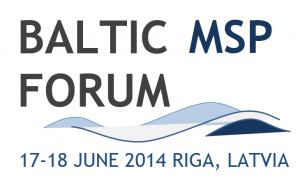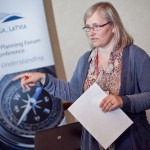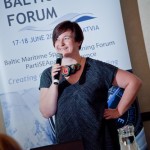 Workshop: Ways of multi-level public participation and stakeholder involvement
Workshop: Ways of multi-level public participation and stakeholder involvement
Moderator: Kristina Veidemane, Baltic Environmental Forum
Presentations
- Göran Hallin, Senior Partner, Kontigo AB: Stakeholders in Swedish Marine Planning. Towards a strategy for stakeholder involvement - download
- Anni Konsap, Ministry of the Interior, Estonia: Stakeholder involvement in maritime spatial planning in Estonia – download
- Magdalena Matczak, Maritime Institute in Gdànsk:Handbook on multi-level consultation process in MSP - download
Workshop summary
 The session was dedicated to effective stakeholder participation in the MSP processes. At the beginning the moderator introduced the background of public participation and the forms of participation in the policy development process. Next, K. Veidemane explained the multidimensional perspective of the participation process.
The session was dedicated to effective stakeholder participation in the MSP processes. At the beginning the moderator introduced the background of public participation and the forms of participation in the policy development process. Next, K. Veidemane explained the multidimensional perspective of the participation process.
Mr. G. Hallin, Senior Partner, Kontigo AB presented the Swedish methodological approach for stakeholder categorisation and analysis that had been applied in the Study on Swedish stakeholders. The study was conducted to describe the strategic positions of stakeholders, i.e. to identify those who are proactive, reactive or dormant ones. The latter group of stakeholders is particularly important as they may not want to be involved in the participation process, but may sometimes vigorously defend their interests in retrospect. It was also pointed out that special attention should be paid to stakeholders with strong economic, political and scientific legitimacy. Planners should actively support small and weak stakeholders and ensure open processes throughout the planning process.
Experience from Estonia to organise stakeholder involvement in MSP was presented by Ms. A. Konsap, Ministry of the Interior, Estonia. She presented two different examples of regional approaches to involve stakeholders in MSP. Even though Estonian Government has initiated MSP, it is implemented by regional authorities in Hiiumaa island waters and Pärnu Bay. The two pilot examples provide a solid basis on how to proceed with the stakeholder involvement process for the rest of the Estonian waters.
 Next, Ms. M. Matczak, MIG Poland, introduced the objectives and structure of the Handbook on multi-level consultations in MSP which is developed in the scope of the PartiSEApate project. The approach of developing a checklist containing important questions for the successful consultation has been chosen to support planners in the implementation of different MSP steps. Ms. Matczak also presented an overview on what kind of consultation activities need to be performed at different planning levels and in different planning stages.
Next, Ms. M. Matczak, MIG Poland, introduced the objectives and structure of the Handbook on multi-level consultations in MSP which is developed in the scope of the PartiSEApate project. The approach of developing a checklist containing important questions for the successful consultation has been chosen to support planners in the implementation of different MSP steps. Ms. Matczak also presented an overview on what kind of consultation activities need to be performed at different planning levels and in different planning stages.
In the interactive phase of this workshop, participants were asked to give feedback on the proposed handbook and checklist. The following issues were brought up:
- It is important to understand whether the government should be considered as one stakeholder or if each ministry is a separate stakeholder. The answer to this question might differ in different countries, depending, among other things, on the existence of a harmonised national strategy with particular goals.
- National goals should take precedence over local interests.
- Different dimensions in the stocktaking process are provided by the public and the private sector. That is why they should be treated differently. The private sector plays an important role with regard to future uses.
- Consultations on spatial conflicts and possible solutions need to be organised at national and cross border level.
- For conflict resolution, all levels have to be addressed and bilateral/sector-oriented communication is the appropriate tool. However, it is also important to deal with case specific problems and, thus, consultations shall be organized with the involvement of selected participants.
- When drafting the plan, it is important to organize far reaching public consultation events. These events fulfill the function of ‘learning platforms’, because they allow to get to know the perspectives of different actors at different levels. In addition to the public events, individual consultations with sector representatives need to be carried through.
- A tool box is needed on how to organise multilevel stakeholder events. The toolbox could contain cases on (successful) implementation practices for stakeholder identification and public participation.
Video recording
Part 1
Part 2
Part 3

